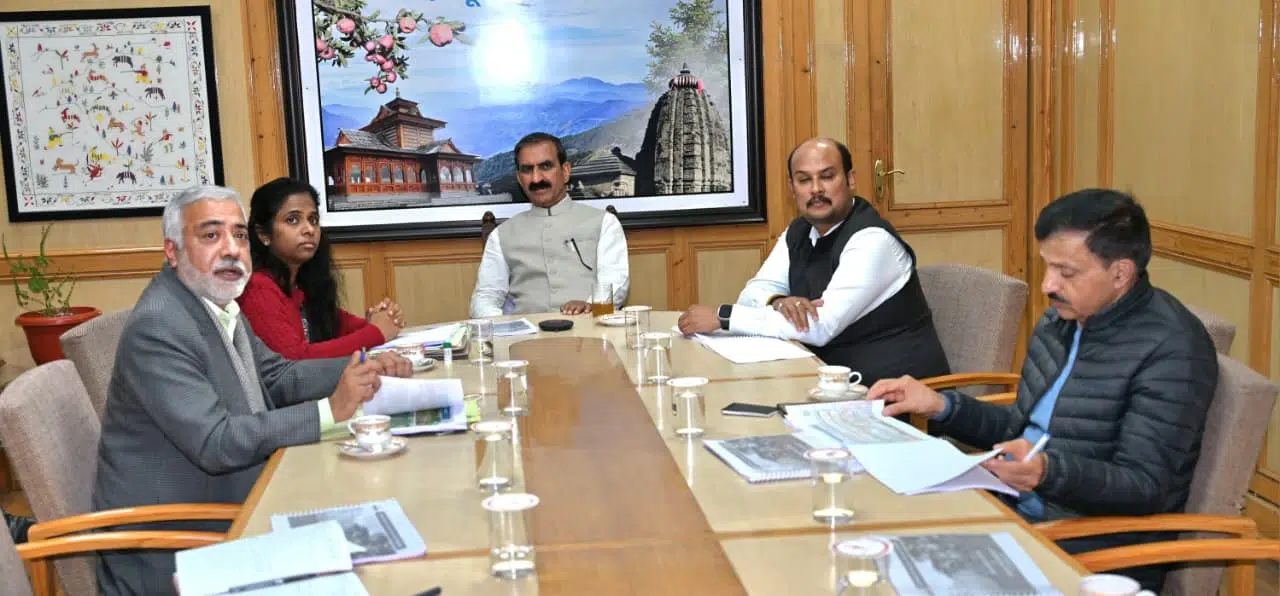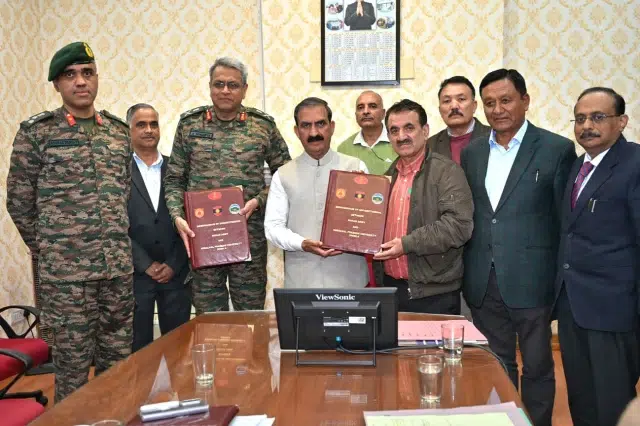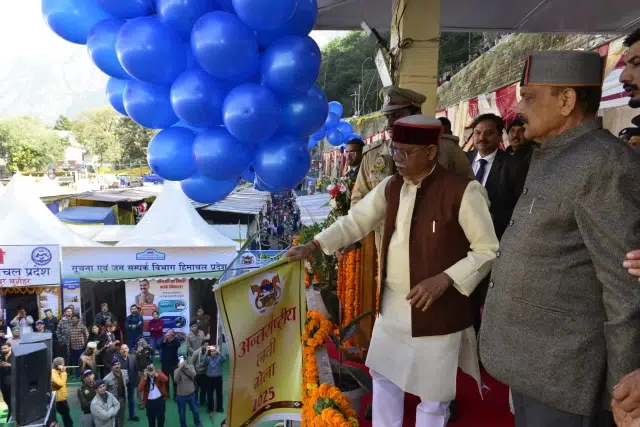Neglected Marvel: Poor Connectivity to Kangra’s Rock-Cut Temples Raises Alarms
4 min read
Kangra/ Shimla, Jan 17 Ritanjali Hastir
The 8th-century Masroor Rock-Cut Temples in Kangra stand as silent witnesses to India’s glorious past, yet their fate today is shrouded in neglect and apathy. Often referred to as the ‘Ellora of the North’, these ancient monolithic structures, a marvel of architectural genius, attract a steady stream of visitors — travel bloggers, history enthusiasts and curious tourists. However, despite their cultural and historical significance, the road leading to these UNESCO-aspirant temples remains in a deplorable state, highlighting the lack of attention from those responsible for preserving such national treasures.
The 15-kilometre stretch from Ranital to Lunj, the primary access route to the temples, is riddled with potholes, uneven surfaces and a general absence of maintenance. This crumbling infrastructure serves as a glaring metaphor for the government’s failure to prioritize heritage conservation, raising questions about the authorities’ commitment to preserving India’s cultural gems. While the Archaeological Survey of India (ASI) has long recognized the temples’ importance, the surroundings and approach roads are visibly neglected, leaving the Masroor Temples to languish in obscurity despite their potential to boost the local economy through heritage tourism.
The road itself, which should offer a smooth and scenic route to one of North India’s most unique historical sites, has become a discouraging journey for tourists. Instead of immersing themselves in the beauty of the temples, visitors are subjected to a frustrating and hazardous trip. The absence of basic emergency aid or services only adds to the ordeal, leaving stranded travellers to fend for themselves. Such conditions make the road an unsustainable deterrent to tourists, directly impacting the influx of visitors and, consequently, the local economy.
Moreover, the infrastructure intended to make the visit more comfortable for travellers also remains in dire need of attention. The aerial viewpoint, a popular spot for tourists to capture the grandeur of the rock-cut structures, suffers from a lack of proper amenities. The public toilets near the viewpoint are a sad sight — filthy, lacking running water and poorly lit. These unsanitary conditions make the facilities unusable, forcing visitors to either hold their discomfort or risk health hazards. Ironically, a new public toilet has been constructed outside the temple complex, but the already existing toilets continue to remain in neglect. The fact that funds were allocated for their upkeep, yet they remain in such a pitiful state, raises serious questions about the mismanagement of resources and the government’s commitment to providing basic amenities to support heritage tourism.
Vijai Singh Mankotia, Former MLA, has been an outspoken critic of the state’s disregard for this historical monument. “The Masroor Rock-Cut Temple in Kangra, a unique architectural marvel and the only rock temple in North India, stands as a stark example of governmental apathy,” he remarked. He pointed to the erosion of the rock surfaces caused by extreme weather conditions — rains, hailstorms, high-velocity winds — as well as the defacing of the temple by irresponsible tourists. Mankotia’s calls for preservation have gone unheeded, with both the Archaeological Survey of India (ASI) and state authorities citing a lack of funds and manpower as reasons for inaction.
monument. “The Masroor Rock-Cut Temple in Kangra, a unique architectural marvel and the only rock temple in North India, stands as a stark example of governmental apathy,” he remarked. He pointed to the erosion of the rock surfaces caused by extreme weather conditions — rains, hailstorms, high-velocity winds — as well as the defacing of the temple by irresponsible tourists. Mankotia’s calls for preservation have gone unheeded, with both the Archaeological Survey of India (ASI) and state authorities citing a lack of funds and manpower as reasons for inaction.
The promises made by government officials about the road widening project from the National Highway to the temple, which was initiated by Union Minister Nitin Gadkari before the last Lok Sabha elections, have failed to materialize. The patchwork repairs done by the Public Works Department have done little to improve the road, which remains unsafe for visitors. This failure of governance not only jeopardizes the safety and comfort of tourists but also tarnishes the legacy of the temple, as it risks losing its cultural and historical significance to time and negligence.
 Vinay Dhiman, the District Tourism Development Officer (DTDO) for Kangra, acknowledged the situation but offered little reassurance. “The road’s condition has significantly impacted tourist inflow,” he stated. “In the past, inadequate patchwork repairs were made due to a lack of funds. However, we are now taking up the repair work, and it will commence shortly. We are committed to improving connectivity to this heritage site, ensuring a better experience for visitors while supporting its preservation as a cultural and historical landmark.”
Vinay Dhiman, the District Tourism Development Officer (DTDO) for Kangra, acknowledged the situation but offered little reassurance. “The road’s condition has significantly impacted tourist inflow,” he stated. “In the past, inadequate patchwork repairs were made due to a lack of funds. However, we are now taking up the repair work, and it will commence shortly. We are committed to improving connectivity to this heritage site, ensuring a better experience for visitors while supporting its preservation as a cultural and historical landmark.”
While the government has effortlessly digitized the entry fee for the Masroor Rock-Cut Temples at Rs 20, it’s almost as if they believe a smooth online transaction can make up for the bumpy, pothole-ridden road leading to the site. Who needs proper roads when you can pay digitally, right?
Despite these promises, the Masroor Rock-Cut Temples stand on the brink of a grim future, one marked by neglect, deteriorating infrastructure and a lack of commitment to preserving a vital part of India’s history. Without urgent intervention, the temples, which once stood as symbols of India’s grandeur, may crumble into the annals of forgotten history, leaving future generations with only stories of what was lost. If we do not act now, we may lose this unique cultural heritage to time and indifference — an irreversible loss that no amount of regret can undo.






